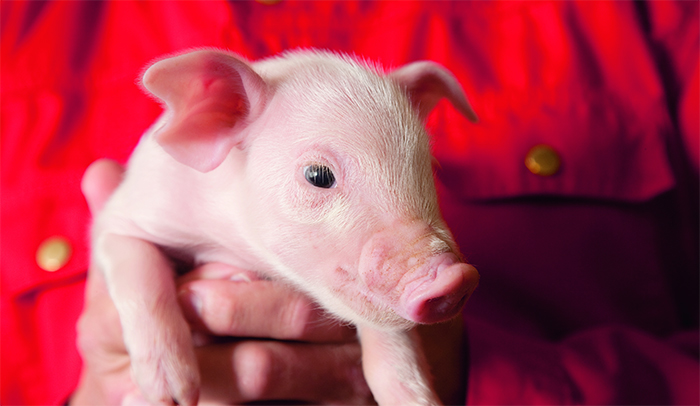
Contrary to what many believe, iron deficiency anaemia in piglets has not been wiped out with the implementation of supplemental iron during the piglets’ first days.
Due to modern production methods, iron needs have resurfaced and, consequently, anaemia is now back in the pigpens where it poses a serious threat to both growth rates, animal welfare and profits.
“Many go about in the mistaken belief that the risk of anaemia has been eliminated with the initial administration of 200 mg supplemental iron to the newborn piglets. But the increased productivity of modern swine production has caused increased iron needs”, warns leading experts on piglet health, Thomas G. Gillespie from Rensselaer Swine Services and a founding member of the International Iron Expert Board.
1 in 5 piglets suffer from anaemia
A shocking 1 in 5 piglets in a general commercial setting suffer from acute clinical iron deficiency-induced anaemia, defined as a hemoglobin concentration below 90 g Hb/L, recent prevalence studies show. Furthermore, up to 75 % of the piglets have an inadequate level of iron when using the threshold of 110 g Hb/L as the optimal value.
“Sadly, many swine producers neglect to monitor for iron deficiency anaemia regularly – not out of ill will but because they are not aware of the threat anaemia in the early nursery poses to the productivity and welfare of their herds. They think that by injecting their piglets with 200 mg iron at day 1-3, they have eliminated the risk of anaemia. And, therefore, anaemia is often allowed to thrive and cause a lot of damage before it is detected,” says Thomas G. Gillespie and points out that the early nursery period is indeed the period of the piglets’ lives that will be most impacted with less than desired growth if there are limiting conditions present like anaemia.
Threat to growth rates and profits
Next to feed and water, iron is the most important factor for growth in piglets, and iron deficiency doesn’t allow for outstanding growth. With limited iron stores at birth and low uptake from milk and feed, on average, a piglet requires approximately 53 mg iron per kilo growth.
Did you know?
A variation of 10 g Hb/L in hemoglobin levels at weaning is associated with an average variation of 18 g/day in weight gain 3 weeks after weaning. This corresponds to an average 378 g. variation in weight gain.
According to Thomas G. Gillespie, it is imperative that pig farmers start taking anaemia much more seriously and focus on early detection and effective treatment.
“Iron deficiency is a hidden condition that develops quickly and, therefore, it is often allowed to thrive and cause irreversible damage to a herd before it is detected. If left untreated, clinical anaemia will quickly turn into more severe health conditions and poorer growth since the body cannot respond well,” he says.
Permanent deficit in growth
Waiting until the piglet has developed acute clinical anaemia will have serious consequences for both animal welfare and profits – because even when hemoglobin levels are restored, the deficit in growth is permanent, he adds:
“The return to normal hemoglobin levels for piglets with acute clinical anaemia can be accomplished by the administration of injectable iron supplementation, but the recovery period is significantly longer and directly associated with a loss of production”.
Defining best practice cut-off values/Aim for 110
“There is a huge difference in the way anaemia is managed around the world - for instance, cut-off values for hemoglobin concentrations vary from 70 to 160 g Hg/L. But leading experts agree that hemoglobin concentrations below 90 g Hb/L can be used to define cases of acute clinical iron deficiency anaemia, and that the optimal hemoglobin concentration in piglets at weaning which breeders should strive for in order to ensure an optimal ongoing anaemia management of their herd is 110 g Hb/L”, Thomas G. Gillespie says.
